News
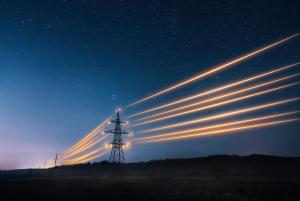
June 18, 2024
As the United States expands its clean energy capacity, it also needs more transmission bandwidth. Reconductoring—a power industry term for replacing cables on existing transmission towers—is one way to expand the nation’s transmission capacity.To help assess reconductoring projects, researchers at Lawrence Berkeley National Laboratory (Berkeley Lab) have developed the Reconductoring...
Read more
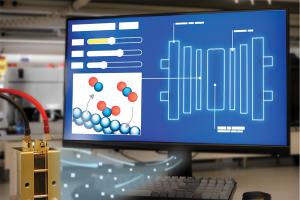
June 3, 2024
Some parts of the world have been so successful in making inexpensive renewable electricity that we occasionally have too much of it. One possible use for that low-cost energy: Converting carbon dioxide into fuel and other products using a device called a membrane-electrode assembly.A team of scientists from Lawrence Berkeley National Laboratory (Berkeley Lab) and the University of California...
Read more
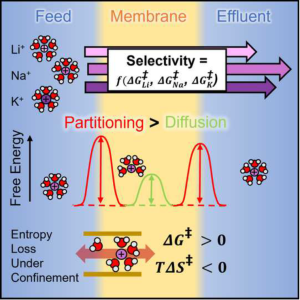
May 22, 2024
New research out of Lawrence Berkeley National Lab (Berkeley Lab) is helping pave the way for polymer membranes that can filter specific ions—a task that has been a significant challenge in the past. Isolating and recovering specific ions, like lithium, from complex mixtures is important for new applications like lithium mining, battery and magnet recycling, and microelectronics. The study has...
Read more

May 6, 2024
Abby Dernburg and Ramamoorthy Ramesh, two senior faculty scientists at Lawrence Berkeley National Laboratory (Berkeley Lab), have been elected to the National Academy of Sciences (NAS) in recognition of their distinguished and continuing achievements in original research. They join 118 other new members and 24 international members who will be formally inducted next April.On top of being one of...
Read more
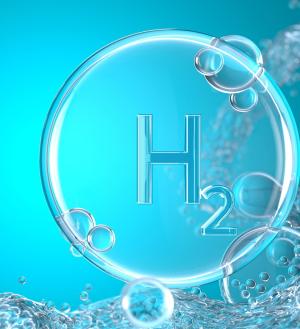
April 12, 2024
In the transition from fossil fuels to clean energy, next-generation hydrogen technology can help tap an abundant supply of zero-emission renewable energy. The Department of Energy (DOE) estimates that as much as 50% of the world’s energy-related carbon emissions are from sectors with potential to shift to clean hydrogen.Production of hydrogen using low-temperature electrolysis makes the dynamic...
Read more
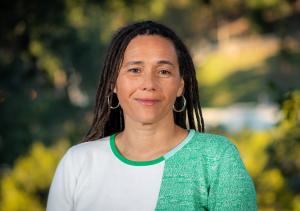
April 10, 2024
Jessica Granderson, a senior scientist at Lawrence Berkeley National Laboratory (Berkeley Lab), has been named director of the Building Technology and Urban Systems (BTUS) Division in the Energy Technologies Area. Her appointment is effective immediately and follows an extensive international search.“Jessica’s formidable experience of over 17 years at Berkeley Lab, her management skills,...
Read more
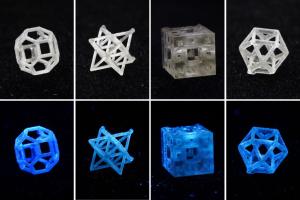
January 23, 2024
A research team led by Lawrence Berkeley National Laboratory (Berkeley Lab) has developed “supramolecular ink,” a new technology for use in OLED (organic light-emitting diode) displays or other electronic devices. Made of inexpensive, Earth-abundant elements instead of costly scarce metals, supramolecular ink could enable more affordable and environmentally sustainable flat-panel screens and...
Read more
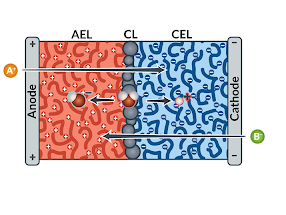
January 22, 2024
For decades, the food industry has used bipolar membranes for goals ranging from isolating proteins to preserving the color of apple juice. Now these specialized materials are at the scientific forefront of advanced energy conversion and storage and carbon capture, among other uses. A newly published review led by researchers at Lawrence Berkeley National Laboratory (Berkeley Lab) explores bipolar...
Read more
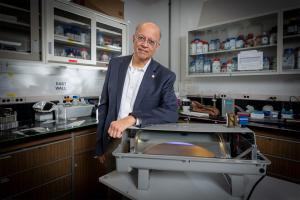
December 13, 2023
Ashok Gadgil – a retired faculty senior scientist in the Energy Technologies Area of Lawrence Berkeley National Laboratory (Berkeley Lab) – is among 162 new fellows of the National Academy of Inventors (NAI) for 2023. His many inventions include low-cost, life-sustaining solutions such as safe drinking water and fuel-efficient cookstoves for the most vulnerable communities in the developing...
Read more

November 13, 2023
Several employees in the Energy Technologies Area were honored in this year’s Director’s Awards at the U.S. Department of Energy's Lawrence Berkeley National Lab (Berkeley Lab). The Lab’s Director’s Awards program recognizes employees’ accomplishments, leadership, collaboration, multi-disciplinary science, cross-divisional projects, and commitment to excellence in support of the Lab’s...
Read more

November 7, 2023
Physicist Senior Scientist Vassilia Zorba, leader of the Laser Technologies Group in the Energy Storage and DIstributed Resources Division at Lawrence Berkeley National Laboratory (Berkeley Lab), has been recognized by multiple field-leading groups as a key figure in optics and photonics today. The professional society Optica (formerly OSA) – one of the largest in the field with 24,000 members,...
Read more
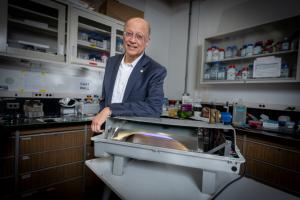
October 24, 2023
During a ceremony at the White House today, President Biden awarded Lawrence Berkeley National Laboratory (Berkeley Lab) retired Faculty Senior Scientist Ashok Gadgil the National Medal of Technology and Innovation, the nation’s highest honor for technological achievement. His award is “for providing life-sustaining resources to communities around the world. His innovative, inexpensive...
Read more
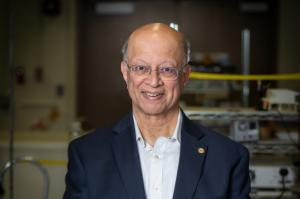
October 24, 2023
Growing up in Mumbai, India in the 1950s, Ashok Gadgil remembers his small apartment overflowing with books. “My dad was a member of a number of libraries and he would bring in a dozen books at a time,” he fondly recalls. These early experiences contributed to his growing curiosity and awareness of the world, and subsequently, his interest in science. Gadgil earned degrees in physics from the...
Read more
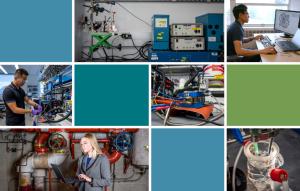
October 9, 2023
Hydrogen, the smallest element in the universe, has huge potential as a clean energy source. Using hydrogen (H2) as a fuel and as a means of storing energy could reduce our dependence on petroleum and help us reduce air pollution and greenhouse emissions to meet our goals for a cleaner and better climate. However, adopting hydrogen power on a large scale requires advances in technology and the...
Read more

October 3, 2023
Researchers at Lawrence Berkeley National Laboratory (Berkeley Lab) will receive more than $9.7 million in federal funding to enhance the cybersecurity of our nation’s clean energy infrastructure. The award comes from the U.S. Department of Energy’s (DOE) Office of Cybersecurity, Energy Security, and Emergency Response (CESER) as part of a $39 million package distributed across nine innovative...
Read more
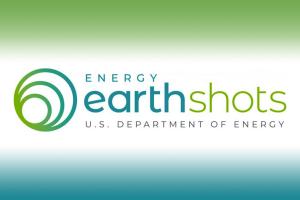
September 29, 2023
The Department of Energy’s Lawrence Berkeley National Laboratory (Berkeley Lab) will host two new centers dedicated to advancing clean energy technology and combating climate change. The awards are part of DOE’s Energy Earthshots Initiative that launched in 2021 with the goal of speeding up technological breakthroughs and lowering costs. DOE has so far launched seven Earthshots spanning clean...
Read more
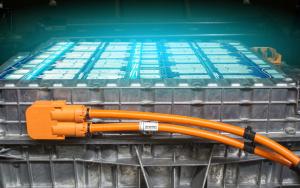
September 11, 2023
A consortium of the nation’s best battery scientists, led by Lawrence Berkeley National Laboratory (Berkeley Lab), will accelerate the commercialization of a new family of battery cathode materials called DRX or “disordered rock salt.” DRX cathodes could provide batteries with higher energy density than conventional lithium-ion battery cathodes made of nickel and cobalt, two metals that are...
Read more
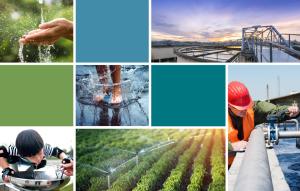
September 6, 2023
Innovative water treatment and desalination technologies hold promise for building climate resilience, realizing a circular water economy, and bolstering water security. However, more research and development is critical not only to radically lower the cost and energy of such technologies, but to effectively treat unconventional water sources. Conventional water supplies, such as fresh water and...
Read more

August 24, 2023
Two innovative technologies from the Energy Technologies Area (ETA) are among four at the U.S. Department of Energy’s Lawrence Berkeley National Laboratory (Berkeley Lab) that have been honored with a 2023 R&D 100 Award. The award, presented by R&D Magazine and selected by an independent panel of judges, recognizes the year’s 100 most innovative and disruptive technology products from...
Read more

August 4, 2023
Mary Ann Piette, whose research has been foundational to improving energy efficiency of existing buildings and integrating flexible building technologies with the electric grid, has been appointed Associate Laboratory Director (ALD) of the Energy Technologies Area (ETA). The appointment, which took effect August 2, follows a national search. Piette has served as the interim ALD of ETA since...
Read more
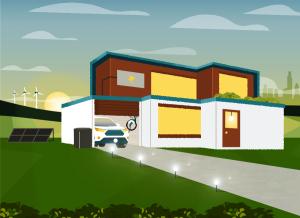
July 18, 2023
Researchers are hard at work on ways to make buildings more energy-efficient and user-friendly as part of net zero carbon emissions energy systems. That means things like windows and walls that take advantage of nature to heat and cool, better batteries to store and deliver energy when needed, and systems that can adapt to changes from the electrical grid. What would it look like to combine all of...
Read more
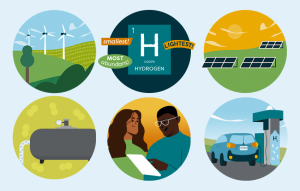
May 30, 2023
Solid oxide electrolysis cells that operate at high temperature provide high performance and efficiency, and can make use of waste heat or steam from industrial or geothermal sources. Lawrence Berkeley National Laboratory (Berkeley Lab) researchers are working to reduce the cost and increase the durability of electrolyzers and advanced pathways. The Science in Motion series from the Berkeley Lab...
Read more

May 10, 2023
After the Justice40 (J40) Initiative was established in 2021 by President Biden with the objective that 40% of benefits from certain federal investments go to disadvantaged communities, five scientists at the U.S. Department of Energy’s (DOE’s) Lawrence Berkeley National Laboratory (Berkeley Lab) played a key role in mapping out how to achieve this goal in federal programs that focus on...
Read more
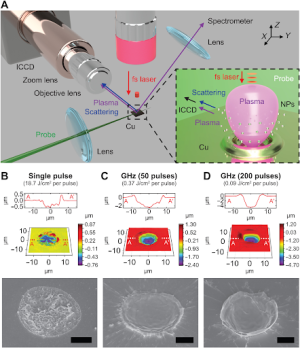
May 9, 2023
A team of scientists from the Department of Energy’s Lawrence Berkeley National Laboratory (Berkeley Lab) have now made significant headway in describing the complex dynamics in the ablation of copper. Their novel imaging setups, described in Science Advances, allowed the real-time visualization of plasma plumes, copper particles, and ejecta streaks created by the laser on the metal’s surface...
Read more

April 6, 2023
Levels of planet-warming carbon dioxide in the air continue to rise. Cutting emissions by moving away from fossil fuels is a priority – but so is removing carbon that’s already been emitted. Of the many emerging technologies on the table, which ones will be most effective, and where? What about costs? What kinds of investments will have the most impact? Scientists at the Department of...
Read more